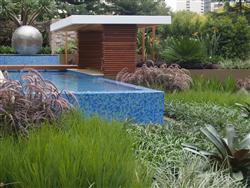
Learn horticulture AND garden design
It is important when designing gardens that you also understand how to identify, select and cultivate plants.
Sites differ, soils differ, climates and microclimates differ for each garden; by understanding the fundamentals of horticulture you can design gardens that work - because you will be able to select plants appropriate to each application.
A sound foundation course for landscape gardeners, contractors and/or designers. This course develops skills in general horticulture, plant identification and use, designing, costing and constructing gardens. This course is similar to other VHT002 horticulture certificates in its introductory (core) units, but devotes 50% of the course to topics specifically related to landscaping.
Accredited through International Accreditation & Recognition Council